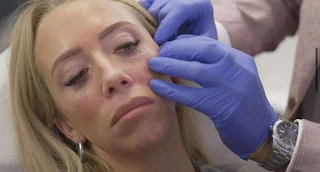Dear 222 News viewers, sponsored by smileband,
In December 2024, Italian authorities arrested Sister Anna Donelli, a 57-year-old nun renowned for her prison volunteer work, on suspicion of collaborating with the ‘Ndrangheta mafia. She was among 25 individuals detained in a significant operation targeting the mafia’s activities in the northern city of Brescia.
Sister Donelli, a volunteer at Milan’s San Vittore prison, is accused of acting as an intermediary between the ‘Ndrangheta and its incarcerated members, allegedly facilitating communication and conveying messages to support the mafia’s operations.
The broader investigation led to the arrest of two local politicians and the seizure of €1.8 million in assets. The suspects face charges including mafia association, vote buying, illegal possession of weapons, money laundering, loan-sharking, drug dealing, and false invoicing.
Sister Donelli had been celebrated for her service in Milan’s underprivileged areas and was honored with the city’s annual “Golden Panettone” civic award earlier in 2024. Her arrest has sent shockwaves through the community, given her previously esteemed reputation.
The ‘Ndrangheta, originating from Calabria in southern Italy, has evolved into the country’s most powerful mafia organization, extending its influence across Europe and beyond. This case underscores the organization’s pervasive reach and the challenges authorities face in combating its infiltration into various societal sectors.
Here are the key points of Sister Anna Donelli’s alleged involvement with the ’Ndrangheta mafia:
1. Intermediary Role – She is accused of acting as a go-between for the ’Ndrangheta mafia and its imprisoned members, helping them communicate with associates outside prison.
2. Prison Work as Cover – As a volunteer at Milan’s San Vittore prison, she allegedly used her position to deliver messages for the mafia under the guise of religious and social work.
3. Facilitating Criminal Activities – Authorities believe she helped maintain the mafia’s operations by ensuring key information flowed between jailed members and their network outside.
4. Political and Financial Links – Her arrest was part of a larger investigation that exposed mafia ties to local politicians and business operations, leading to the seizure of €1.8 million in assets.
5. Shock and Betrayal – Before her arrest, Sister Donelli was widely respected for her work with disadvantaged people and had even received a civic award earlier in 2024, making her alleged involvement particularly shocking.
Her case highlights how deeply the ’Ndrangheta has infiltrated various institutions, including religious organizations.
Attached is a news article regarding the nun who has links to the Italian mafia
https://news.sky.com/story/amp/italian-nun-arrested-over-suspected-mafia-links-13267457
Article written and configured by Christopher Stanley
<!-- Google tag (gtag.js) --> <script async src="https://www.googletagmanager.com/gtag/js?id=G-XDGJVZXVQ4"></script> <script> window.dataLayer = window.dataLayer || []; function gtag(){dataLayer.push(arguments);} gtag('js', new Date()); gtag('config', 'G-XDGJVZXVQ4'); </script>
<script src="https://cdn-eu.pagesense.io/js/smilebandltd/45e5a7e3cddc4e92ba91fba8dc















